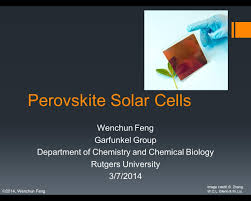
Breaking News
 Outraged Farmers Blame Ag Monopolies as Catastrophic Collapse Looms
Outraged Farmers Blame Ag Monopolies as Catastrophic Collapse Looms
 Exposing the Cover-Up That Could Collapse Big Medicine: Parasites
Exposing the Cover-Up That Could Collapse Big Medicine: Parasites
 Israel's Former Space Security Chief says Aliens exist, and President Trump knows about it
Israel's Former Space Security Chief says Aliens exist, and President Trump knows about it
 Putin's advisor Kobyakov: The U.S. has devised a crypto scheme to erase its massive debt...
Putin's advisor Kobyakov: The U.S. has devised a crypto scheme to erase its massive debt...
Top Tech News
 Methylene chloride (CH2Cl?) and acetone (C?H?O) create a powerful paint remover...
Methylene chloride (CH2Cl?) and acetone (C?H?O) create a powerful paint remover...
 Engineer Builds His Own X-Ray After Hospital Charges Him $69K
Engineer Builds His Own X-Ray After Hospital Charges Him $69K
 Researchers create 2D nanomaterials with up to nine metals for extreme conditions
Researchers create 2D nanomaterials with up to nine metals for extreme conditions
 The Evolution of Electric Motors: From Bulky to Lightweight, Efficient Powerhouses
The Evolution of Electric Motors: From Bulky to Lightweight, Efficient Powerhouses
 3D-Printing 'Glue Gun' Can Repair Bone Fractures During Surgery Filling-in the Gaps Around..
3D-Printing 'Glue Gun' Can Repair Bone Fractures During Surgery Filling-in the Gaps Around..
 Kevlar-like EV battery material dissolves after use to recycle itself
Kevlar-like EV battery material dissolves after use to recycle itself
 Laser connects plane and satellite in breakthrough air-to-space link
Laser connects plane and satellite in breakthrough air-to-space link
 Lucid Motors' World-Leading Electric Powertrain Breakdown with Emad Dlala and Eric Bach
Lucid Motors' World-Leading Electric Powertrain Breakdown with Emad Dlala and Eric Bach
 Murder, UFOs & Antigravity Tech -- What's Really Happening at Huntsville, Alabama's Space Po
Murder, UFOs & Antigravity Tech -- What's Really Happening at Huntsville, Alabama's Space Po
Progress to scalable roll-to-roll manufacturing of Perovskite Solar Cells

Most solar panels on the market today are made of silicon, but perovskite solar cells have the potential to accelerate the growth of photovoltaic (PV) manufacturing in the United States because they're much cheaper to make and have shown performance potential in the lab.
The most commonly used deposition method in the laboratory, called spin coating, produces devices with the highest efficiency, but the process wastes more than 90 percent of the chemicals used, the so-called perovskite ink. Spin coating also works best on cells smaller than four square inches, but there isn't an easy way to enable this technology to be used on a larger surface.
The NREL researchers examined potential scalable deposition methods, including:
* Blade coating, which uses a blade to spread the chemical solution on substrates to form wet thin films. The process can be adapted for roll-to-roll manufacturing, with flexible substrates moving on a roller beneath a stationary blade similar to how newspapers are printed. Blade coating wastes less of the ink than spin coating.
* Slot-die coating, which relies on a reservoir to supply the precursor ink in order to apply ink over the substrate. The process hasn't been as well explored as other methods and so far has demonstrated lower efficiency than blade coating. But the reproducibility of slot-die coating is better than blade coating when the ink is well-developed, so this is more applicable for roll-to-roll manufacturing.
* Ink-jet printing, which uses a small nozzle to disperse the precursor ink. The process has been used to make small-scale solar cells, but whether it is suitable for the high-volume, large-area production will depend on the printing speed and device structure.

 Tiny briefcase engine boosts EV range beyond battery power
Tiny briefcase engine boosts EV range beyond battery power 

